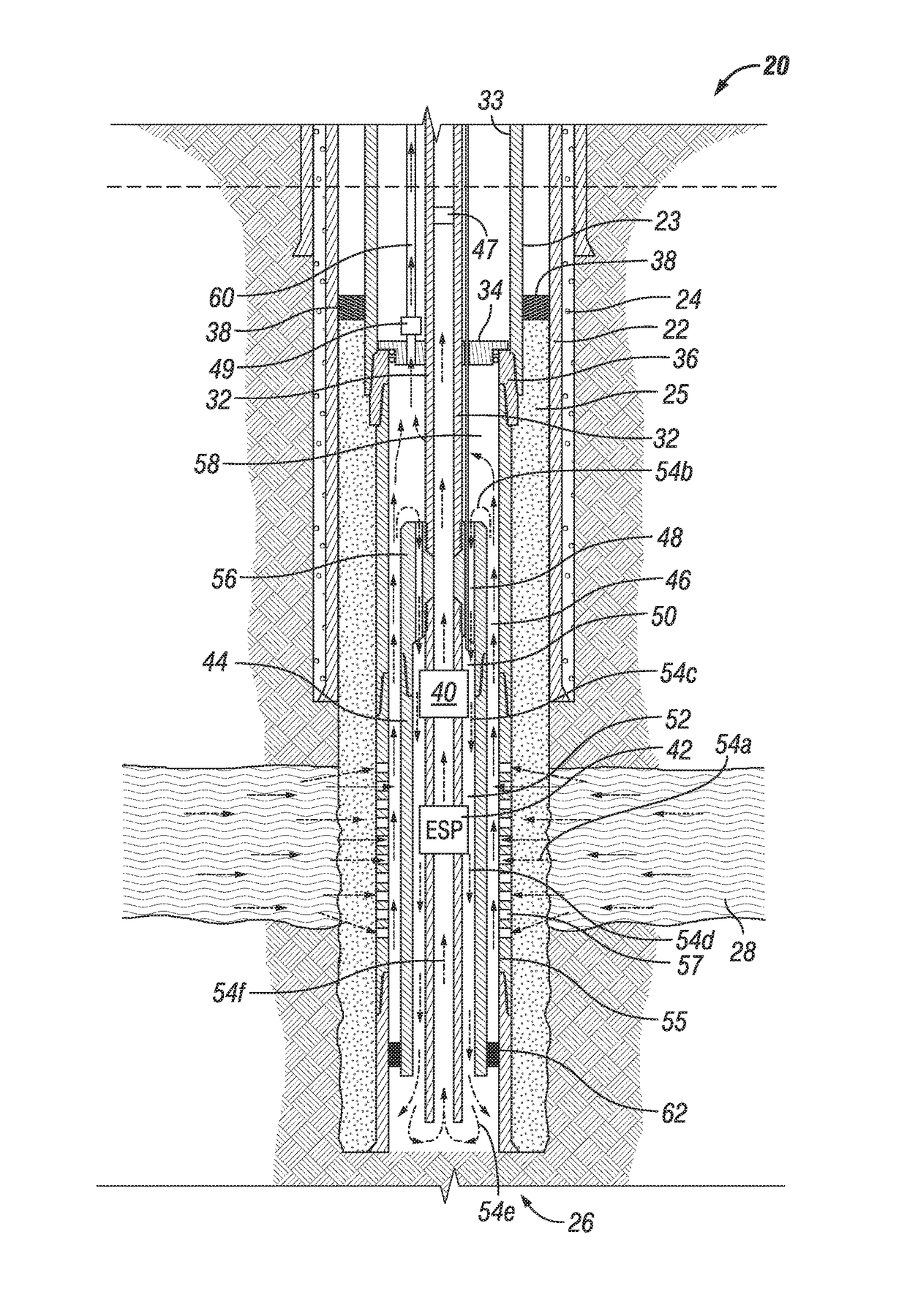System, apparatus and method for producing a well
a wellbore and wellbore technology, applied in the direction of wellbore/well accessories, fluid removal, insulation, etc., can solve the problems of serious problems such as hydrate formation, gas hydrate formation, and undesirable formation of gas hydrates, so as to facilitate downward movement, facilitate upward movement, and reduce the viscosity of production fluids
- Summary
- Abstract
- Description
- Claims
- Application Information
AI Technical Summary
Benefits of technology
Problems solved by technology
Method used
Image
Examples
Embodiment Construction
[0017]A system, apparatus and method is provided that is capable of providing heat across a produced interval during oil and gas production that may serve to minimize or reduce undesirable formation of gas hydrates in the wellbore. In one embodiment the configuration provides a means to recycle and conserve heat generated by an electrical submersible pump (“ESP”). Also, it may be possible in some applications to provide additional heat downhole by the use of one or more heating elements to apply heat to produced fluids that are circulated downhole, thereby minimizing the undesirable formation of gas hydrates within or adjacent to the wellbore interface. An isolation sleeve may be employed that extends across the completion interval and is sealed near the bottom in a seal receptacle, causing the flow stream from the wellbore to flow up the outside of the isolation sleeve. The fluids and gas may be separated, as further described herein. Also, such heat could assist in producing heavy...
PUM
 Login to View More
Login to View More Abstract
Description
Claims
Application Information
 Login to View More
Login to View More - R&D
- Intellectual Property
- Life Sciences
- Materials
- Tech Scout
- Unparalleled Data Quality
- Higher Quality Content
- 60% Fewer Hallucinations
Browse by: Latest US Patents, China's latest patents, Technical Efficacy Thesaurus, Application Domain, Technology Topic, Popular Technical Reports.
© 2025 PatSnap. All rights reserved.Legal|Privacy policy|Modern Slavery Act Transparency Statement|Sitemap|About US| Contact US: help@patsnap.com


